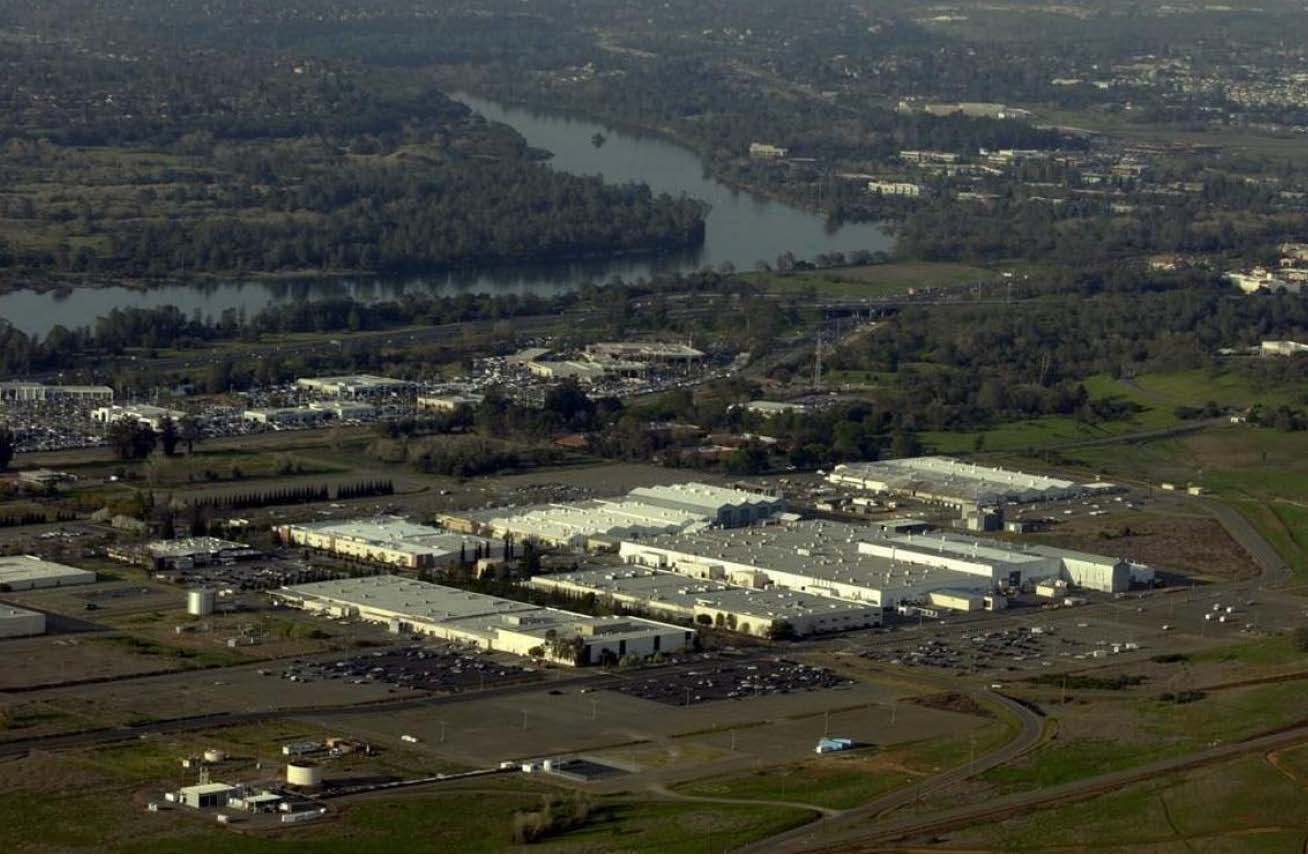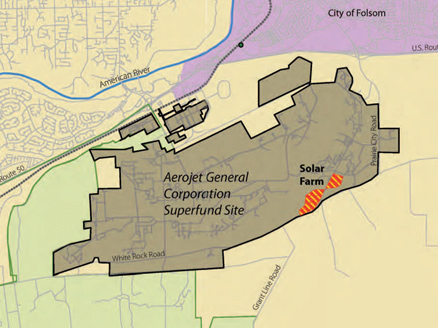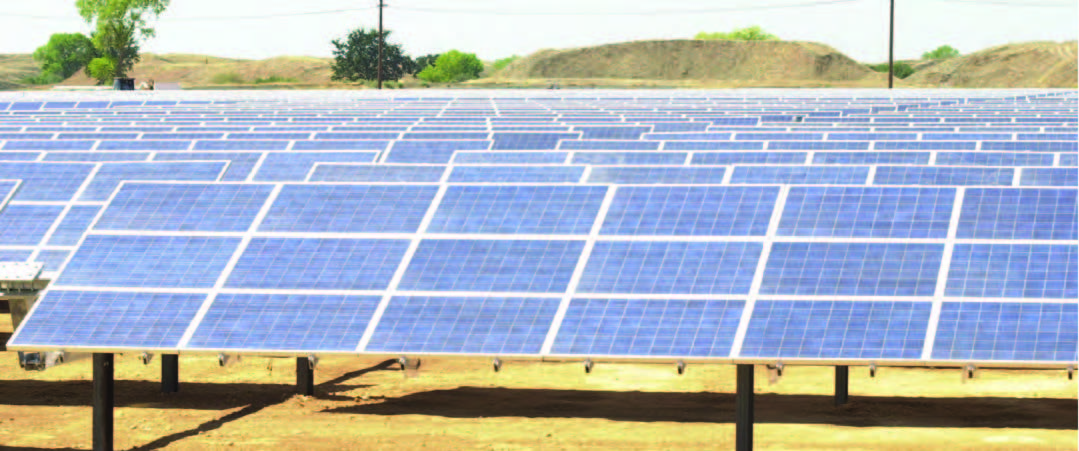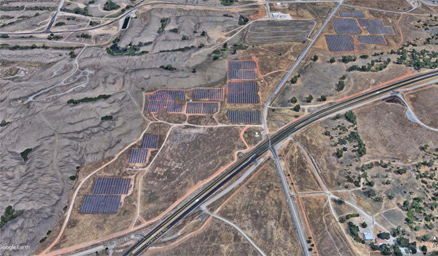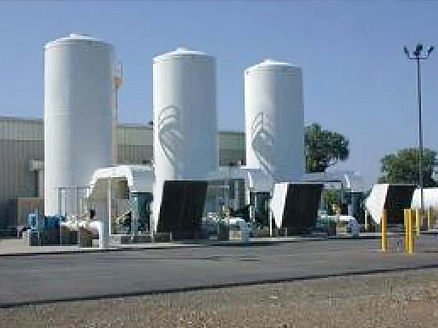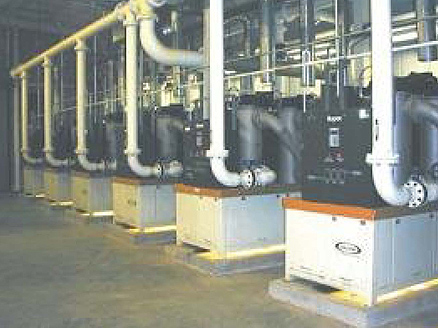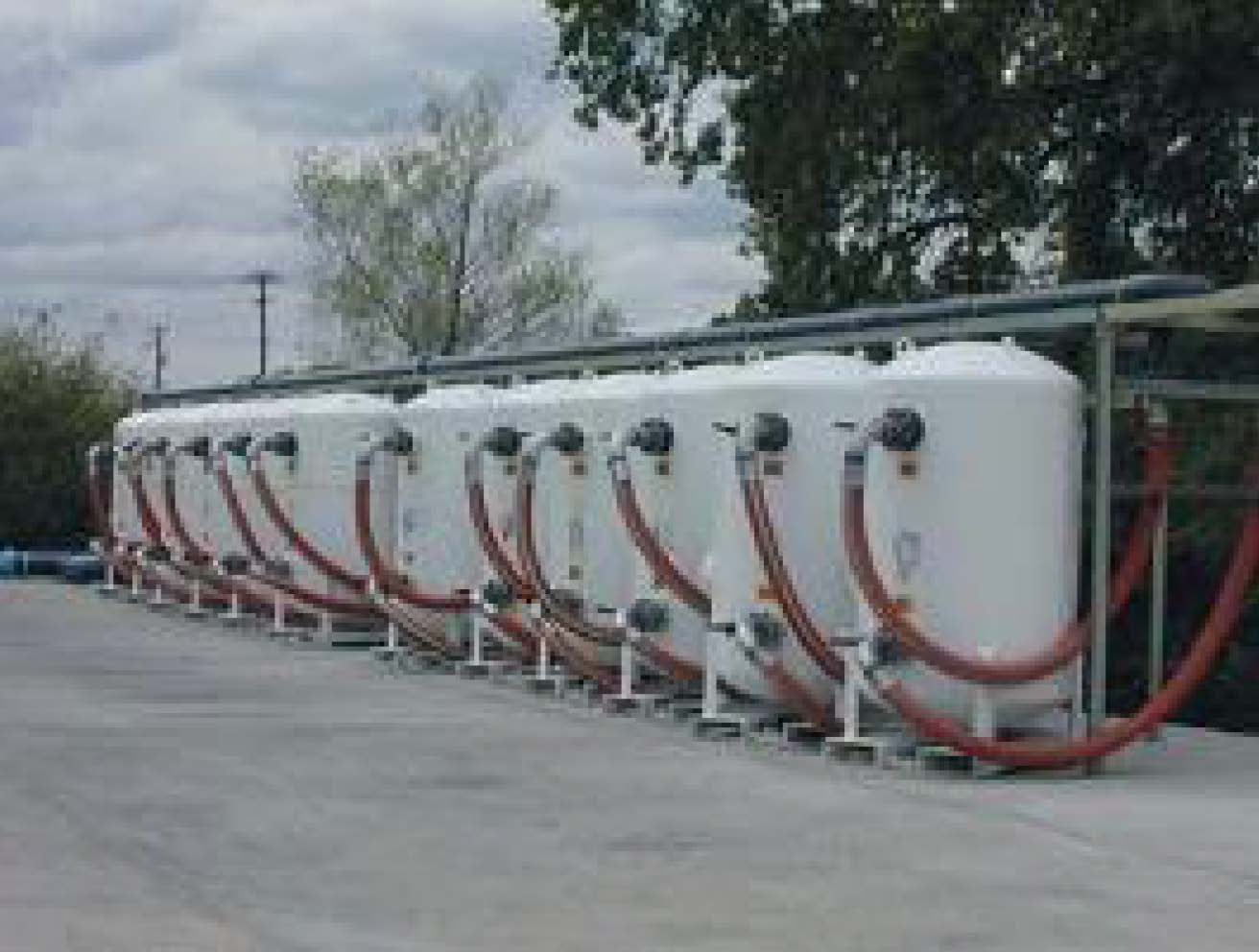Green Remediation Focus
Aerojet-General Corporation
Rancho Cordova, California
Superfund NPL
Cleanup Objectives: Treat groundwater and soil containing trichloroethylene (TCE), perchlorate, N-nitrosodimethylamine (NDMA) and other contaminants released during past manufacturing of rocket engines and propellants and processing of various chemicals. Wastes were disposed of in surface impoundments, landfills, deep injection wells and leachate fields or burned in open pits that became sources of migrating contamination over time. Additionally, dredge tailings from past gold mining operations remain in surface soil and extend 40 feet below ground surface. The site covers approximately 5,900 acres located about one half-mile from the American River, which is the primary source of regional drinking water, and about 7 miles from Folsom Lake.
Green Remediation Strategy: Best management practices to achieve a greener cleanup of contaminated groundwater and impacted soil at the Aerojet-General Corporation site include:
- Using an onsite source of renewable energy to offset grid electricity consumed by remediation equipment. A 6 megawatt solar farm constructed in 2010 now operates on 40 uncontaminated acres of the site through a power purchase agreement (PPA) among Aerojet, the Sacramento Municipal Utility District (SMUD) and a commercial energy developer.
- Modifying the groundwater extraction and treatment systems to reduce their demand for process water. Groundwater extracted from more than 100 wells is treated in seven treatments plants using technologies such as ultraviolet (UV)/oxidation, ion exchange and air stripping.
- Reclaiming a portion of the treated groundwater for onsite non-potable use.
- Integrating future land use plans into the site cleanup activities and infrastructure. Plans for the site's "Area 40" include a new municipal park and designated open space within the City of Folsom.
- Isolating remedial activities in the open space to assure ecosystem preservation. The site contains habitat critical to Lower American River Basin wildlife, which includes 15 species designated as endangered, threatened or of concern. Inventories indicate that the Basin supports more than 220 bird species, 30 mammal species, 43 river species and 17 land-based reptile species.
Implementation of the initial green remediation strategy merited a public involvement award from the National Association of Environmental Professionals in 2011.
Results:
Renewable Energy Production
- Generating about 11 million kilowatt hours of electricity from renewable resources each year through operation of the onsite solar farm, which offsets approximately 30 percent of the grid electricity demanded by the full network of groundwater extraction and treatment systems. More than 20 million gallons of groundwater are extracted and treated each day.
- Offsetting an estimated 4,000 tons of carbon dioxide, 3 tons of sulfur dioxide, and 3 tons of nitrogen oxide emissions each year due to onsite production of electricity from renewable resources.
- Reducing the cost of purchasing electricity for site remediation as well as onsite administrative offices by an estimated total of $10 million over 25 years, due to a long-term price discount established by the PPA. Under the PPA and associated indemnification, the energy developer owns, operates and maintains the solar farm on property leased from Aerojet and is released from cleanup liability under Superfund. The solar farm's $20 million construction cost was offset by approximately $13 million in SMUD incentives over a 10-year period.
Water Conservation and Preservation
- Using about 700,000 gallons of the water treated each day for onsite purposes such as cooling interiors of administrative buildings. Reclamation of the treated water was made possible in 2014 by constructing an alternate pipeline and initiating other infrastructure improvements. As much as 2 million gallons of treated water were reclaimed each day for such use until 2017, when the water demand began decreasing due to shutdown of onsite manufacturing processes.
- Reduced the volume of raw lake water used as groundwater-treatment process water by approximately 2 million gallons per day due to the 2014 infrastructure improvements. This approach increased the groundwater remedy's resilience to short- and long-term regional droughts while helping to preserve water storage in Folsom Lake, which is anticipated to supply water for planned residential developments in the City of Folsom.
- Releasing approximately 75 percent (21 million gallons each day) of the treated groundwater to constructed channels emptying into the American River in accordance with an associated state permit instead of discharging the effluent to (and increasing burden on) the municipal sewer system. Most of this discharge to the American River is committed to water purveyors for use as potable water supply.
- Preserved capacity to construct, operate and maintain additional groundwater monitoring wells at the solar farm if needed in the future, due to placement of the solar farm photovoltaic (PV) modules in adequately spaced rows.
- Facilitated future infiltration of precipitation received on the solar farm acreage through use of ground-inserted beams instead of concrete footings on which to mount the PV modules, which reduced the extent of impermeable surfaces. This technique also minimizes long-term disruption to onsite flora and fauna.
Ecological Habitat Conservation and Species Protection
- Discouraging animals from burrowing in subsurface soil containing high concentrations of volatile organic contaminants (VOCs) across the Area 40 open area through installation of a raptor perch and owl box. This approach replaced the original post-excavation restoration plan involving placement of a 6-inch layer of cobble stone that could deter burrowing but prevent desired reestablishment of non-burrowing wildlife habitat and the native grassland vegetation community.
- Continuing collaboration among stakeholders to prevent VOC exposure of burrowing animals and other ecological receptors in the Area 40 portion targeted for development as a municipal park. In accordance with anticipated land use restrictions, the park's design is anticipated to contain minimal habitat for burrowers, and its primary access road will be constructed relatively distant from the 20-acre open space area.
- Preserving natural wetlands within the Area 40 open space by strategically delineating and limiting the areas where contaminated soil will be excavated. The American River hosts habitat for species such as the northwestern pond turtle, fall-run Chinook salmon and Central Valley steelhead trout.
Property End Use:Continued office environment for aerospace and defense business, with future mixed-use residential and commercial developments on certain remediated parcels and adjacent properties.
Point of Contact: Daewon Rojas-Mickelson, U.S. EPA Region 9 and Christopher Fennessy, Aerojet Rocketdyne, Inc.
Update: October 2020



